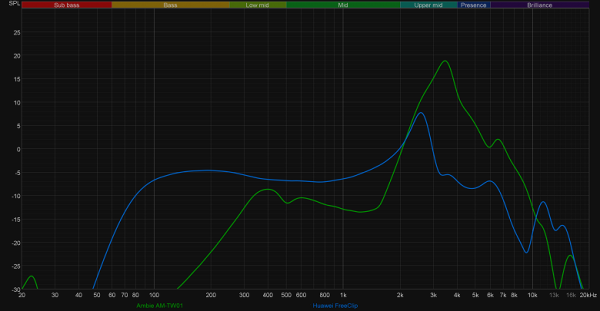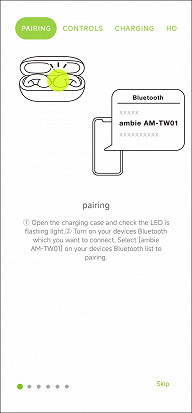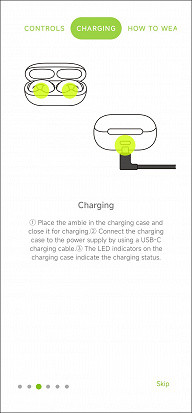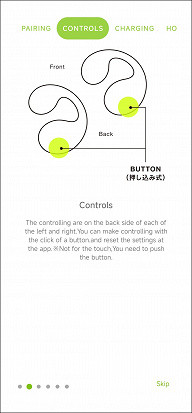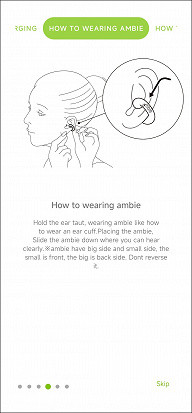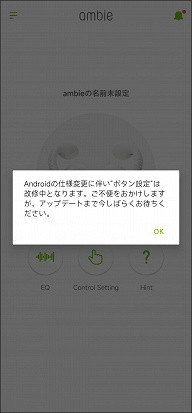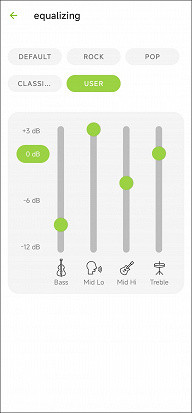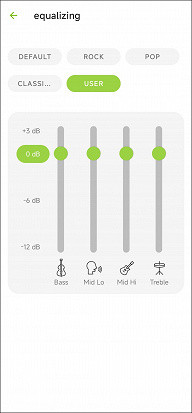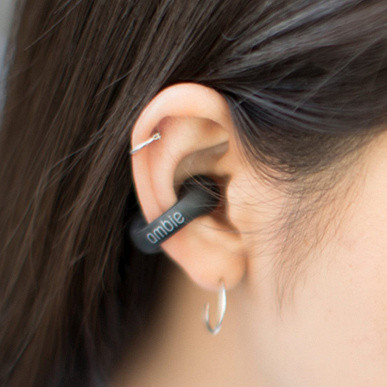We recently tested Huawei FreeClip headphones, which stand out for their unusual design, reminiscent of earrings or cuffs that are attached to the auricle. As expected, these headphones have their advantages and disadvantages due to their shape. The sound duct of the headphones does not enter the ear canal, remaining free. This allows the user to hear surrounding sounds, which can be convenient when walking or exercising outdoors. On the other hand, the level of sound insulation is minimal, which can be inconvenient when using headphones in transport.
Sound features also stand out — «deep» bass delivery may be limited and there may be problems with sound leakage. Huawei developers tried to take these points into account, improving the positive aspects and minimizing the negative ones. In general, despite the unusual appearance and the described pros and cons, Huawei FreeClip performed well in a number of use scenarios.
Thus, with interest, we decided to test another headset in the form of ear cuffs. Ambie AM-TW01, which went on sale some time ago, attracted attention with its history. Ambie apparently started out as a subsidiary of Sony, developing a new headphone format. After testing corded models, Ambie introduced the AM-TW01 in 2021. These headphones are still available for purchase today, but their prices raise some questions.
Specifications
| Connection | Bluetooth 5.2 |
|---|---|
| Codec support | SBC, AAC, aptX, aptX Adaptive |
| Multipoint | No |
| Management | mechanical buttons |
| Active Noise Cancellation | No |
| Headphone battery capacity | 35 mAh |
| Case battery capacity | 270 mAh |
| Battery life | up to 6 hours |
| Autonomy including charging from the case | until 18 o'clock |
| Charging connector | USB Type-C |
| Fast charging | not declared |
| Water protection | IPX5 (headphones only) |
| Case dimensions | 37×66×21 mm |
| Earphone dimensions | 21×28×14 mm |
| Weight of one earphone | 4.2 years |
| Case weight | 25 years |
Packaging and accessories
The Ambie AM-TW01 has a minimalistic and eco-friendly packaging — a simple box made of unpainted cardboard, probably made from recycled materials. The minimum number of inscriptions and drawings: brief characteristics and a schematic image of the headphones are presented on a small ring made of the same cardboard, which secures the removable cover. Inside the package there is a case with headphones, and the components are securely held by a cradle made of the same material. Overall, this design looks modest, but at the same time has its own stylish charm.

The delivery set includes headphones placed in the charging case, a USB-A to USB-C cable 30 cm long and instructions. The instructions received were in Japanese, but it was easy to find an English version on the Internet.
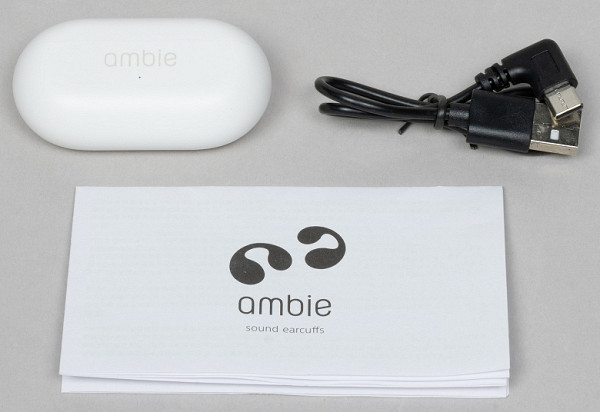
Design and Construction
Externally, the headset looks nice, this cannot be taken away from it. The design is minimalistic, there are no unnecessary decorative elements, the contours are smooth… Everything we love.
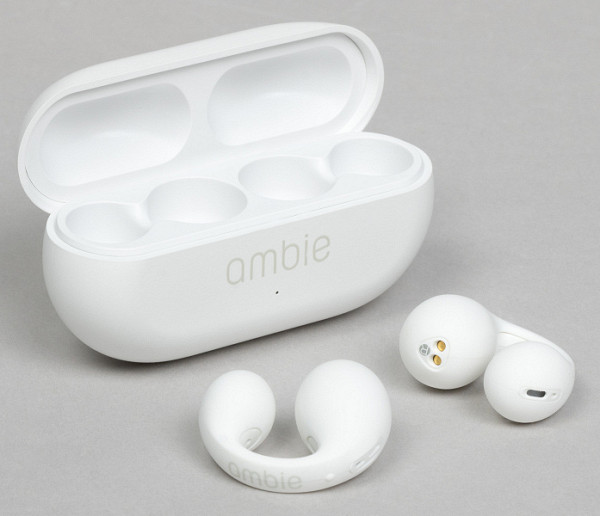
There are two main colors available — black and white. We spotted them on sale, but the official website also mentions six brighter shades that would add extra style to this fashionable set.
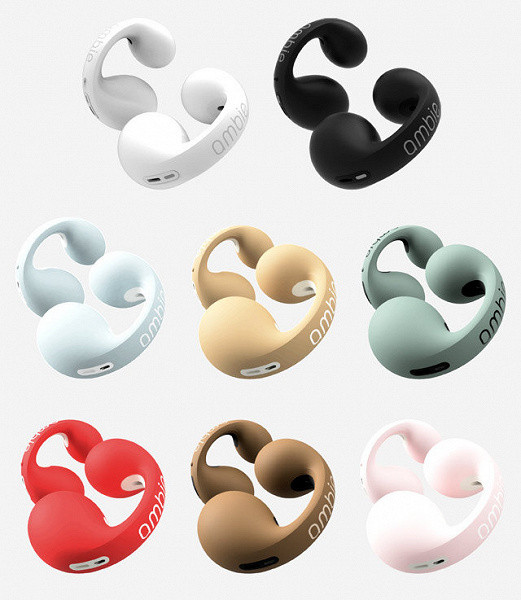
The case is very compact, thanks to the flat front and back panels it fits easily into your pocket. The finish is matte, resistant to touch stains and pleasant to the touch.
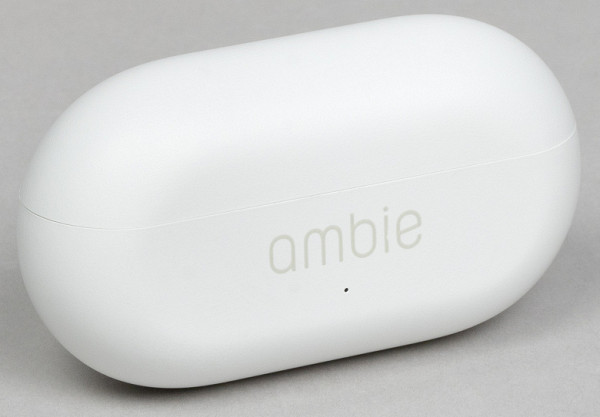
The front panel contains the manufacturer's name and a small LED indicator for the headset status.
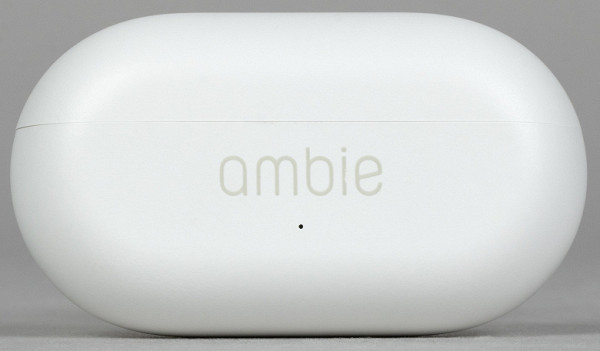
The headphones inside the case are held extremely securely using magnetic fasteners. Taking them out is quite easy — just grab the protruding arc with your fingers and pull.
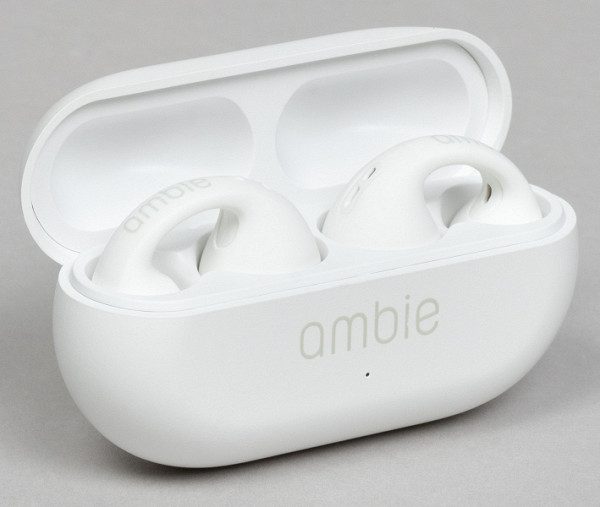
The recesses in the cover provide additional support, thanks to which the headphones are fixed as tightly as possible in the case.
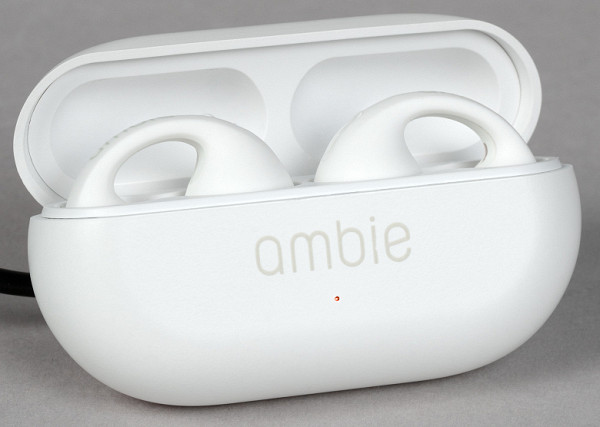
Inside the slots, spring-loaded contacts for charging are visible. They are not placed very deep; if necessary, they will be easy to clean.

On the back panel we see a loop that allows the lid to open. Despite the noticeable and not very neat-looking gaps between the lid and the body, the lid does not play or creak.
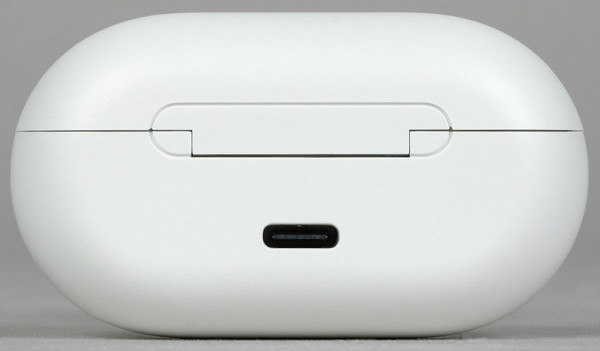
A closer mechanism is available, which is activated at the very end of the stroke and functions only when the lid is closed. Fixation in the open position is accompanied by a soft click. In general, the case is made quite well, but the impressions from use are more reminiscent of cases from models in the budget segment.

Like the already familiar Huawei FreeClip, the Ambie AM-TW01 headphones consist of three elements: one is placed near the ear canal, another rests on the back of the ear, and the third connects the entire structure. This is where the similarities end and the serious differences begin.
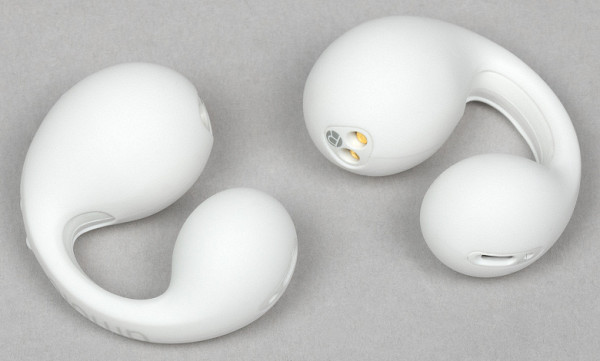
One of the key aspects that significantly affects the usability of the device is the design that connects the halves of the headphones. In Huawei FreeClip, this part is made elastic, providing ease of putting on and gentle pressure on the auricle. In the case of the Ambie AM-TW01, this element is rigid and made of the same plastic as the entire body.
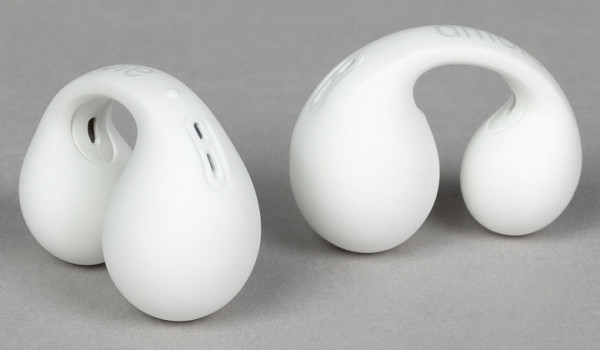
Ambie AM-TW01

Huawei FreeClip
There is a manufacturer’s logo on the outer part of the arc, providing others with accurate information about which “ear-cuffs” the user is using. The entire body is covered with soft-touch material, pleasant to the touch, creating tactile pleasure. In this case, the coating is a separate element fixed to a plastic base, forming a kind of permanent cover. During use, it may become slightly deformed, which may make it difficult to wear the headset comfortably. In addition, there are certain doubts about the durability of such a solution.

The two halves of the Ambie AM-TW01 have a similar teardrop shape. The front part houses the speaker, and the rear part houses batteries, electronic components and microphones. Also on the back there is a mechanical button designed to control the headset. This button is located on the outside of a larger element and its location is not shown in the design.

Let's compare the shape again with the Huawei FreeClip — the latter has a bean-shaped back with a recess that provides a soft fit to the back surface of the auricle. In the case of the Ambie AM-TW01, it is just a teardrop element, which significantly affects the quality and, more importantly, the wearing comfort.
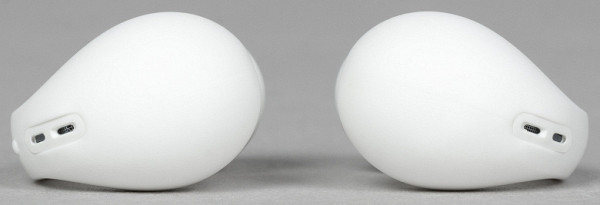
Ambie AM-TW01

Huawei FreeClip
On the inside of the rounded element, charging contacts and not very visible markings for the right and left headphones are more visible.
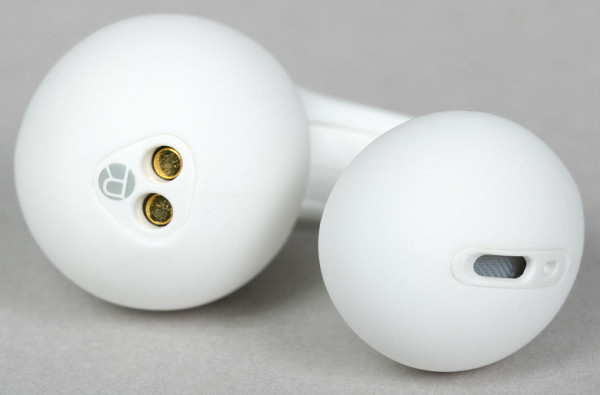
Kulaklık gövdesinin tamamen aynı şekline rağmen, doğru yerleşimlerini sağlamak gerekir — bunlardan biri sağ kulak için, diğeri sol için tasarlanmıştır. Bunun aksine, Huawei FreeClip'te herhangi bir kulaklık herhangi bir kulağa takılabilir; kulaklık bunların konumunu otomatik olarak tanır ve ses kanallarını doğru şekilde dağıtır.

The left earbud has a raised dot on the outside of the arc, which provides a clear tactile orientation and helps you quickly identify which earbud you're holding. In addition, larger microphone openings for voice communications are located closer to the element.
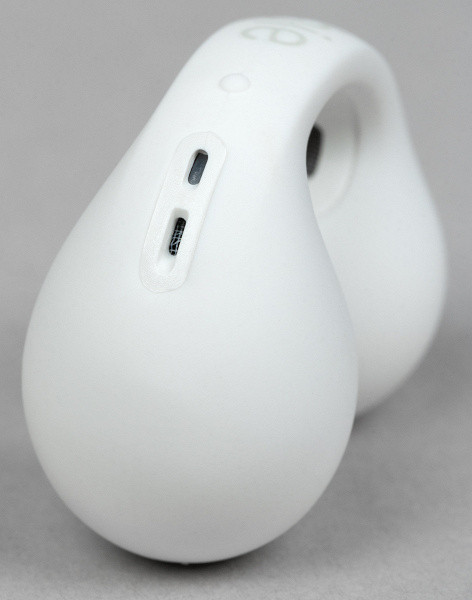
Another hole is visible on the inside of the case. Apparently, it is compensatory and serves to relieve excess pressure during operation of the dynamic driver.
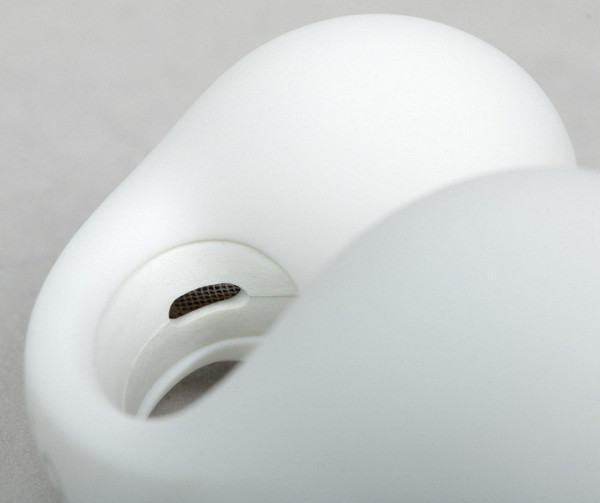
On the inside of the smaller rounded element, which is placed near the ear canal when wearing headphones, there is a slot-like hole behind which the speaker is hidden.
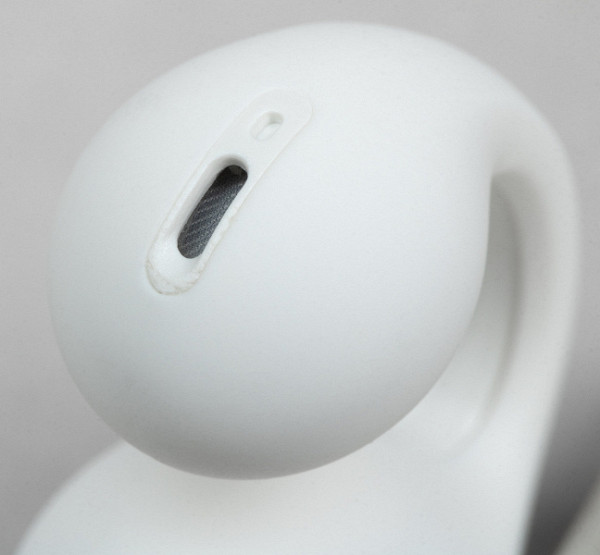
Additional information about the internal design of the Ambie AM-TW01 can be gleaned from the available diagram found on the manufacturer's official website. Of particular interest is the mention of the use of the Qualcomm QCC3040 chip, on the basis of which this headset is created.
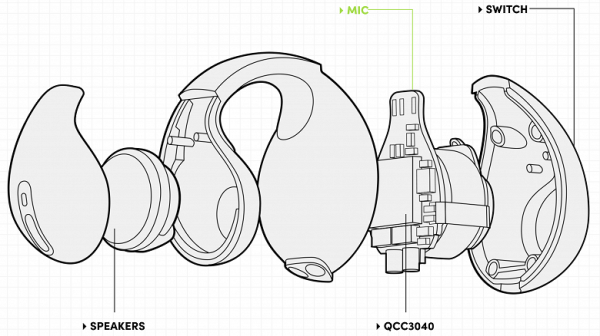
Connection
The process of connecting the Ambie AM-TW01 headphones is simple and hassle-free — there are no «quick» pairing options. After opening the case lid, just wait a few seconds without removing the headphones — they automatically enter pairing mode. We can then easily find them in the corresponding audio source menu, confirm the connection, and we're done. A complete list of supported codecs and their modes was, as usual, obtained using the Bluetooth Tweaker utility.

The process of connecting the Ambie AM-TW01 headphones is simple and hassle-free — there are no «quick» pairing options. After opening the case lid, just wait a few seconds without removing the headphones — they automatically enter pairing mode. We can then easily find them in the corresponding audio source menu, confirm the connection, and we're done. A complete list of supported codecs and their modes was, as usual, obtained using the Bluetooth Tweaker utility.
Management and software
To control the headset, use the previously mentioned button located on the back of the headphone housing. Pressing is relatively easy with a pleasant click, but requires some effort, especially considering the design of the headphones is not the most comfortable when worn at the back of the ear — this will be discussed in more detail below. The control system is logical and convenient — it allows you to fully control not only playback, but also volume:
- Single press (on any earphone): play/pause, call control
- Double press: left earphone — previous track, right — next
- Hold (more than 1 second): left earphone — volume down, right — up
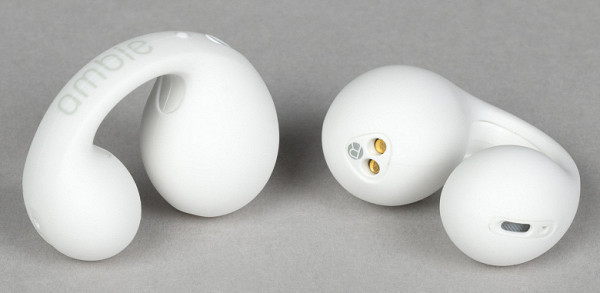
The headphones have their own software called Ambie, available in the AppStore and Google Play, although not in all regions. For Android there are no problems finding the installation file, that's exactly what we did. When you first launch the application, you will be prompted to read the instructions, which are partially translated into English.
The software doesn't have many functions, to be honest. But, at a minimum, there is an equalizer with several presets and the ability to create your own — that’s not bad.
There are only four control strips, but at least they are present. When I try to set up control through the software, a long phrase in Japanese appears. Using a translator, we found out that it basically means: «Something has changed in Android, the control setting is currently not working, we will fix this in the future.» And it seems that this inscription did not appear quite recently.
Exploitation
Let's start our discussion of the user experience with headphones with the traditional criteria of comfort and secure fit, which in this case is one of the most important aspects. As mentioned earlier, one of the key differences between the Ambie AM-TW01 and the previously reviewed Huawei FreeClip headphones is the design that connects the two halves of the device. In the case of Huawei, this is an elastic thread made of nitinol, while in Ambie it is a hard plastic element.
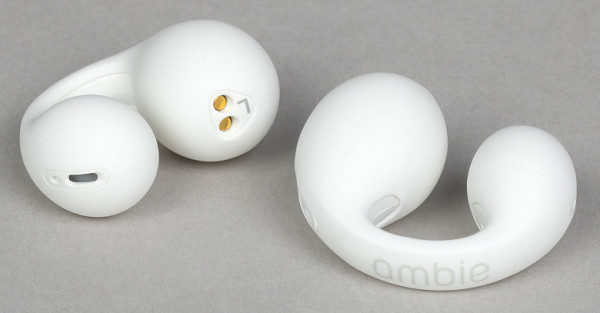
Therefore, how to put on the FreeClip becomes clear almost immediately: we move the elements apart and hook them to the outer part of the ear. The elastic element provides pressure that is not too strong, but sufficient for reliable fastening. This approach doesn’t work with Ambie: moving the parts apart won’t work. You'll have to somehow push the auricle into the gap between the rounded parts… Just in case, let's remind you how ear cuffs are worn:
And putting the Ambie AM-TW01 on the ear in this way turned out to be extremely difficult — it was not possible to do it the first time, and then the ear hurt for several hours. At the same time, the headphones do not provide much comfort when worn: where the Huawei FreeClip has a bean-shaped design with a comfortable recess, the Ambie AM-TW01 has just a rounded element that rests unpleasantly on the back of the ear. Each press of the button pushes it in even further. It was quite an experience — it's unlikely we've ever encountered a more uncomfortable and unpleasant headphone to wear. At the same time, in the promotional video, the woman quickly and easily places the headphones properly:
She may have trained for a long time and completed special courses, but the fact remains: she puts on the headset more or less quickly and confidently. An assumption arose that the author’s hands (and ears) were growing from the wrong place, and the headset was handed over to a girl who had more experience wearing such jewelry and whose ear size was smaller. Standing in front of the mirror, she managed to put on the Ambie AM-TW01 almost the first time. It became clear that over time she would learn to do this no less quickly than the heroine of the commercial.
She didn’t even complain much about the wearing comfort — they say she liked everything. It was only after half an hour that she discovered that she had to take off one earphone — she put it on and took it off a couple of times while she was setting up the headset, and her ear now hurts and needs rest. In general, operating the Ambie AM-TW01 will require experience wearing similar jewelry, a small ear and low sensitivity. This significantly limits the potential audience for headphones. Perhaps this is why they have not gained widespread popularity.
Microphones for voice communication
There is very little information about the Ambie AM-TW01 microphones, or rather, almost none at all. It is only stated that they support the CVC8.0 noise reduction system for calls. To measure the frequency response of microphones, we use a specially prepared room and a monitor acoustic system that reproduces a sweep tone. Naturally, the frequency response of microphones is far from uniform, so we first obtain its graph using a calibrated measuring microphone. This data is then used to create a correction profile that is designed to compensate for acoustic features. The signal is recorded using the testing hero, occupying the same position as the measuring microphone earlier. The resulting graph is adjusted using a pre-created profile, and the output is the native frequency response of the microphone under test.
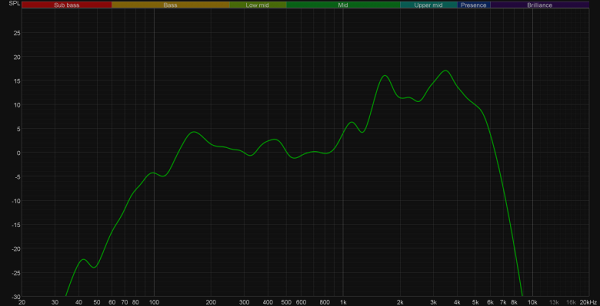
An adult male's voice typically has a fundamental frequency of 85 to 155 Hz, while a woman's voice ranges from 165 to 255 Hz. However, voice transmission typically uses frequencies between 300 and 3400 Hz, which are called “voice frequencies.” In this range are the formants responsible for speech intelligibility. Frequencies below this range are often «clipped» due to the presence of unwanted sounds such as the hum of engines and low-frequency crowd noise.
In this case, the headset does not limit the frequency range, which has a positive effect on the “fullness” of the voice sound. However, this also makes the device more sensitive to various noises, despite the presence of CVC 8.0 technology. The range of 2 kHz and above is considered key for speech intelligibility and clarity, and emphasis on it seems logical.
Autonomy and charging
The manufacturer announced up to 6 hours of headphones on a single charge, which was considered a good indicator at that time. Typically, such data is measured under ideal conditions, and actual autonomy is often lower. We conducted a test, bringing the conditions closer to real ones.
The standard sound pressure level when listening to music is 75 dB, but many people prefer a level of 90-100 dB. We played white noise through headphones while maintaining the sound pressure level at 95 dB, and recorded the running time of the headphones from the start of playback. This way you can estimate the actual operating time of each headphone.

The headphones discharge more or less evenly — with a difference of no more than 10 minutes. An extremely small number of listeners use headsets in mono mode; most often, turning off one of them is a reason to put both in the charging case. Therefore, in the table we will only include the operating time of the earphone that worked less.
| Test 1 | 5 hours 12 minutes |
|---|---|
| Test 2 | 5 hours 10 minutes |
| Test 3 | 5 hours 17 minutes |
| Total | 5 hours 13 minutes |
The actual operating time of the headphones turned out to be lower than stated, but enough for comfortable use throughout the day: a trip to the office, a workout, and a short walk. The headphones are convenient to store in the case, and even if you put them away periodically, charging is easy. Although fast charging is not claimed, 10 minutes in the case provides about an hour of use, which is a satisfactory result. The case is capable of fully charging the headphones three times and charges itself in an hour and a half via the USB Type-C port. The included cable with an angled connector looks interesting, although in this case it may not provide much functional value, except for the fact that you can put the case on it while charging.
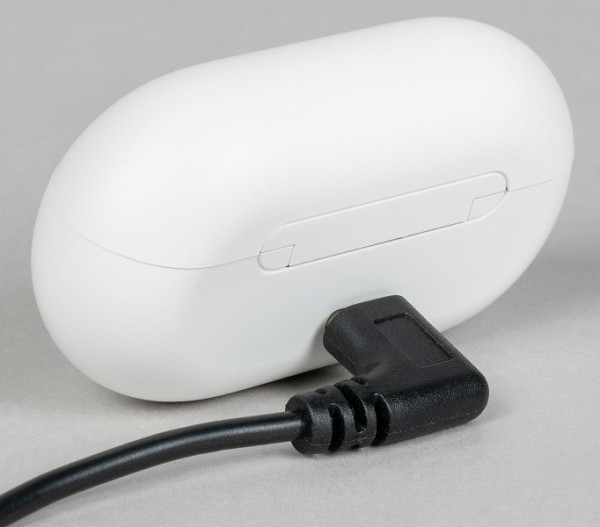
Sound and frequency response measurements
Let's move on to discussing the sound characteristics of the Ambie AM-TW01, but first let's note two important aspects. Firstly, having a sufficient volume reserve allows you to compensate for the design features of the headphones. Secondly, regarding the so-called “sound leaks” — their level is extremely high. In quieter environments, those around you will be able to hear everything played through the headphones, including music and conversations, even at medium volumes. This problem is more pronounced than with bone conduction headphones, and it's clear why the Huawei FreeClip developers pride themselves on reducing leakage.
Now regarding the sound… Let's start by looking at the amplitude-frequency response (AFC) graph, measured using a special stand with a model of the auricle to correctly position the headphones relative to the simulated ear canal.
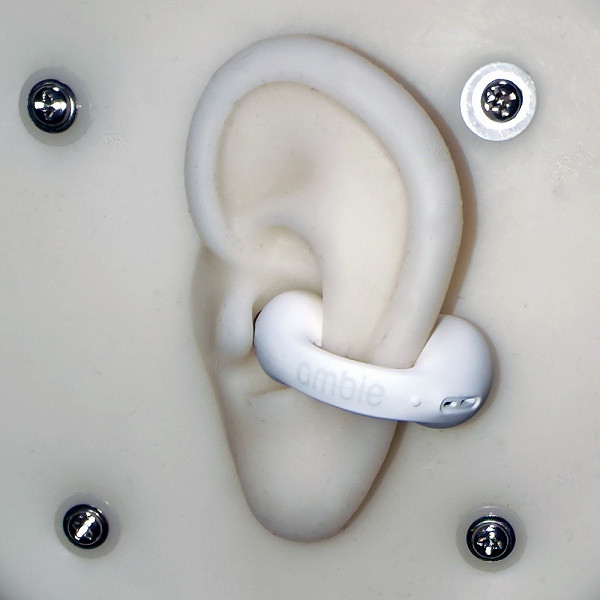
Predictably, there are no correction curves for this type of headphones; this time we will have to do without them. But in this case this is not particularly necessary — everything is visible as is. In short, everything is very bad.
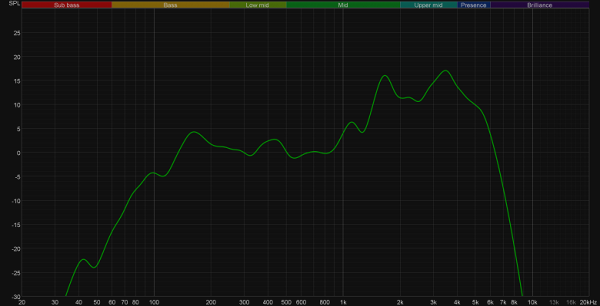
Ambie AM-TW01 offer a complete absence of low-frequency range and sharp highlighting of high frequencies, which creates an unpleasant sound perception. This sound may only be suitable for podcasts or audiobooks, and only on condition that the voices of the speakers are not too high-pitched to avoid harshness of the sound. Even changing the equalizer settings has a slight effect on the sound, and it is almost impossible to improve its performance.

And finally, let’s once again compare the tested model with the already familiar Huawei FreeClip, which showed that “cuff headphones” will have their own characteristics in any case, but they can still provide acceptable sound quality.
